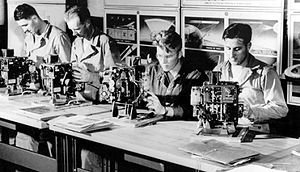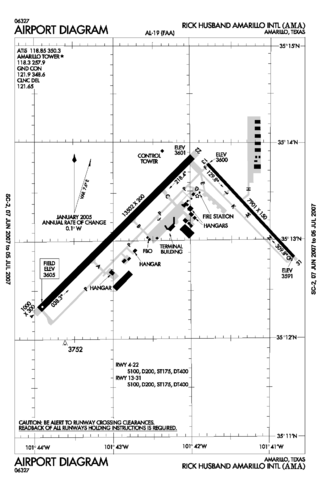
Rick Husband Amarillo International Airport is a public airport six miles (10 km) east of downtown Amarillo, in Potter County, Texas, United States. The airport was renamed in 2003 after NASA astronaut and Amarillo native Rick Husband, who died in the Space Shuttle Columbia disaster in February of that year.

The Second Air Force is a USAF numbered air force responsible for conducting basic military and technical training for Air Force enlisted members and non-flying officers. In World War II the CONUS unit defended the Northwestern United States and Upper Great Plains regions and during the Cold War, was Strategic Air Command unit with strategic bombers and missiles. Elements of Second Air Force engaged in combat operations during the Korean War; Vietnam War, as well as Operation Desert Storm.

The Fourth Air Force is a numbered air force of the Air Force Reserve Command (AFRC). It is headquartered at March Air Reserve Base, California.
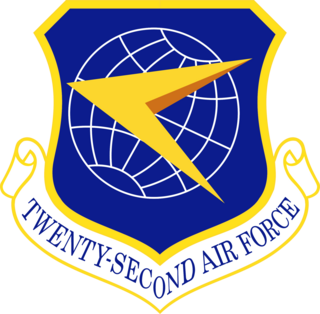
Twenty-Second Air Force is a Numbered Air Force component of Air Force Reserve Command (AFRC). It was activated on 1 July 1993 and is headquartered at Dobbins Air Reserve Base, Georgia.
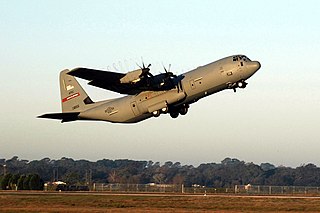
Keesler Air Force Base is a United States Air Force base located in Biloxi, a city along the Gulf Coast in Harrison County, Mississippi, United States. The base is named in honor of aviator 2d Lt Samuel Reeves Keesler Jr., a Mississippi native killed in France during the First World War. The base is home of Headquarters, Second Air Force and the 81st Training Wing of the Air Education and Training Command (AETC).

Peterson Space Force Base, previously Peterson Air Force Base, Peterson Field, and Army Air Base, Colorado Springs, is a U.S. Space Force Base that shares an airfield with the adjacent Colorado Springs Municipal Airport and is home to the North American Aerospace Defense Command (NORAD), the Space Force's 21st Space Wing, elements of the Space Force's Space Systems Command, and United States Northern Command (USNORTHCOM) headquarters. Developed as a World War II air support base for Camp Carson, the facility conducted Army Air Forces training and supported Cold War air defense centers at the nearby Ent Air Force Base, Chidlaw Building, and Cheyenne Mountain Complex. The base was the location of the Air Force Space Command headquarters from 1987 to 20 December 2019 and has had NORAD/NORTHCOM command center operations since the 2006 Cheyenne Mountain Realignment placed the nearby Cheyenne Mountain Complex centers on standby. On 26 July 2021, the installation was renamed Peterson Space Force Base to reflect its prominent role in the new space service.

Lowry Air Force Base is a former United States Army Air Forces (USAAF) training base during World War II and a United States Air Force (USAF) training base during the Cold War, serving as the initial 1955–1958 site of the U.S. Air Force Academy. It is a U.S. Formerly Used Defense Site (B08CO0505).
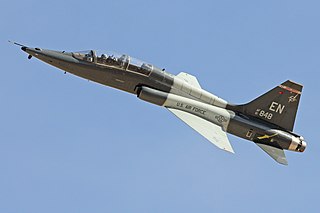
Sheppard Air Force Base is a United States Air Force (USAF) base located five miles (8.0 km) north of the central business district of Wichita Falls, in Wichita County, Texas, United States. It is the largest training base and most diversified in Air Education and Training Command. The base is named in honor of Texas Senator John Morris Sheppard, a supporter of military preparations before World War II.

The 11th Operational Weather Squadron (11OWS) was an operational weather squadron of the United States Air Force. The squadron was based out of Elmendorf AFB, Alaska, and was responsible for forecasting Alaska's weather and analyzing its climate.
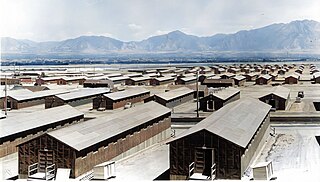
Kearns Army Air Base was a U.S. Army Air Base seven miles (11 km) southwest of Salt Lake City, Utah. It served in many roles. Despite being referred to as air base, it had no runways and no airplanes could land near there. It was not associated with Salt Lake City Municipal Aiport No. 2, which bordered Kearns to the south, which was a small general aviation airport.

The United States Army Air Forces during World War II had major subordinate Commands below the Air Staff level. These Commands were organized along functional missions. One such Command was the Flying Training Command (FTC). It began as Air Corps Flying Training Command on 23 January 1942, was redesignated Army Air Forces Flying Training Command (AAFTC) on 15 March 1942, and merged with Army Air Forces Technical Training Command to become Army Air Forces Training Command on 31 July 1943. Continuing service after the war, it was redesignated Air Training Command on 1 July 1946. During the consolidation of Air Force Major Commands in the retrenchment of the 1990s, Air Training Command assumed control of Air University and became Air Education and Training Command on 1 July 1993—today's Air Education and Training Command (AETC), which celebrated its 75th anniversary 23 January 2017. see the Lineage and honors statement for AETC.

Greenville Air Force Base is a former United States Air Force base in Greenville, Mississippi. It was closed as a military installation in December 1966 and redeveloped into Mid-Delta Regional Airport.
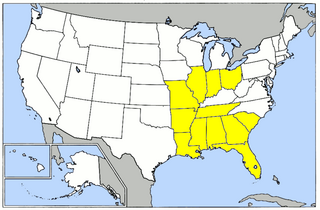
Army Air Forces Eastern Flying Training Command (EFTC) was a unit of the United States Army Air Forces. It was assigned to the Army Air Forces Training Command, stationed at Maxwell Field, Alabama. It was inactivated on 15 December 1945.

Flying Division, Air Training Command, was a training formation of the United States Air Force. The unit was established in 1926 as the Air Corps Training Center to be the primary pilot training center for the Air Corps. It was reorganized into one of three training commands created by the Office of the Chief of the Air Corps in 1940 to accommodate the large number of air cadets being recruited as a result of the expansion of the corps after the fall of France. During World War II, thousands of cadets attended various flight schools throughout the Central United States being trained as pilots for fighters, bombers and transports. It also trained the navigators, bombardiers and gunners necessary for the bombers to attack enemy targets in the combat areas overseas. After World War II, it became the primary pilot and aircrew training unit of the United States Air Force Air Training Command.

Technical Division, Air Training Command is an inactive United States Air Force unit. It was assigned to the Air Training Command, stationed at Scott Air Force Base, Illinois. It was inactivated on 14 November 1949.
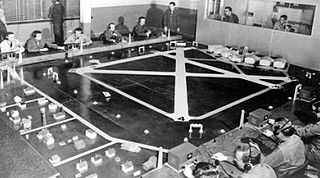
Central Technical Training Command is an inactive United States Air Force unit. It was assigned to the Army Air Forces Training Command, stationed at Saint Louis, Missouri. It was inactivated on 1 March 1944.
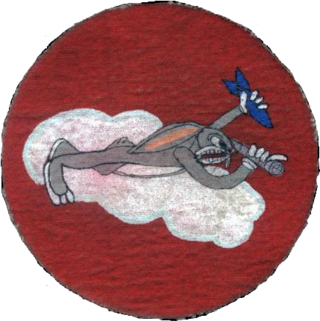
A Bombardier School was a United States Army Air Forces facility that used bombing ranges for training aircrew. After ground simulator training with the Norden bombsight, the 12- to 18-week course recorded each student's scores for approximately 160 practice bomb drops of "Bomb Dummy Units" (BDU), both in daytime and at night. The elimination rate was 12%, and graduates transferred to a Second or Third Air Force training unit to join a crew being trained for overseas duty. The bombardier trainer used was the Beech AT-11 Kansan. With the Bradley Plan increase in Eighth Air Force aircrews needed for the Combined Bomber Offensive, the 17 Army Air Forces Bombardier Schools graduated 47,236.

Fort Logan was a military installation located eight miles southwest of Denver, Colorado. It was established in October 1887, when the first soldiers camped on the land, and lasted until 1946, when it was closed following the end of World War II. After the fort closed the site was used as a mental health center and part of the land was set aside for the Fort Logan National Cemetery.

The 78th Flying Training Wing was a wing of the United States Army Air Forces. It was last assigned to the Central Flying Training Command, and was disbanded on 30 June 1945 at the San Antonio Aviation Cadet Center, Texas.

The Greensboro Training Center is a closed United States Army Air Forces installation. It was last assigned to the United States Army Personnel Distribution Command. It was closed on 15 December 1946.
